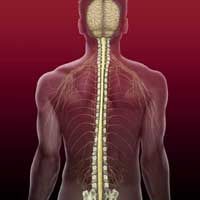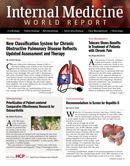Publication
Article
Internal Medicine World Report
Hyperalgesia May Be Reversible After Spinal Pain Pathway Reactivation
Author(s):
Research using an animal model of pain suggests that mechanical hyperalgesia may be reversible in mice after spinal pain pathways are reactivated in a manner analogous to memory reconsolidation.

Research using an animal model of pain suggests that mechanical hyperalgesia may be reversible in mice after spinal pain pathways are reactivated in a manner analogous to memory reconsolidation. This previously unobserved regulatory mechanism suggests that hyperalgesia can be changed at the spinal level and erased following reactivation in a process analogous to memory reconsolidation.
This finding forges an important link to defining hyperalgesia as a pathological pain “memory,” according to Canadian investigators Robert P. Bonin, PhD, and Yves De Koninck, PhD, whose findings were published in Nature Neuroscience (2014;17:1043-1045).
Bonin and De Koninck administered an intraplantar injection of capsaicin in the hind paw of mice to induce mechanical hyperalgesia that persisted for >6 hours and was dependent on spinal protein synthesis. The sensitized pain pathways were then reactivated 3 hours after the first capsaicin injection with a second, identical capsaicin (or vehicle/placebo) injection combined with an intrathecal injection of the protein synthesis inhibitor anisomycin (or vehicle/placebo).
The investigators observed that anisomycin did not affect mechanical hyperalgesia when paired with intraplantar injection of vehicle, suggesting that hyperalgesia induced by the first capsaicin injection is well established and insensitive to disruption by protein synthesis inhibition at that time. However, there was a substantial reduction in hyperalgesia when the second injection of capsaicin was paired with anisomycin.
The time window in which hyperalgesia is changeable after the second injection of capsaicin was found to be limited to >2 hours post-treatment. The researchers say they have uncovered the ability for mechanical hyperalgesia to be changed and reversible in mice after reactivation of spinal pain pathways in a process analogous to memory reconsolidation. “These findings reveal a previously unknown regulatory mechanism underlying hyperalgesia and demonstrate the existence of reconsolidation-like processes in a sensory system,” they conclude.





